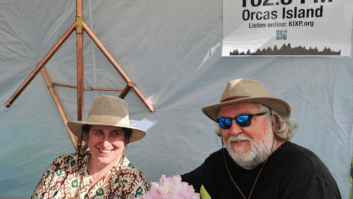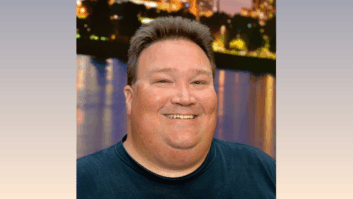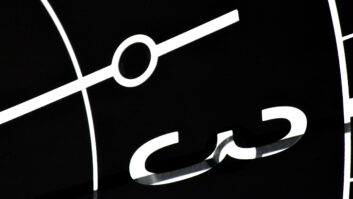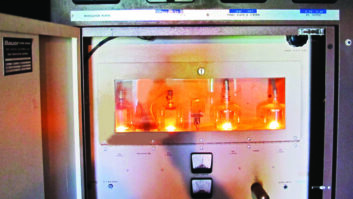In March we shared a suggestion from Wayne Eckert about applying the right amount of torque when tightening screws on terminal blocks. Rolf Taylor followed up with more thoughts.
In a perfect world, you would use a torque-limiting screwdriver to achieve the manufacturer’s recommended torque. Of course, Wayne is correct that the driver needs to have the right fit to the screw. So just what is the right tip?
Many screws now found on electrical outlets have combination heads that will support both Phillips and flat drivers. Which is better? It turns out the answer is “both.”
Someone clever had the idea of a bit designed just for these screws. It looks like a Phillips bit but one of its crosses is flat like a flat head. Rolf said these work well and that it is easy to deform a copper conductor slightly, which is desirable.
Companies like Klein and Grainger make them; search for “combination tip” or “combo tip.”
Click on the photo below to toggle between pictures.
For 111-C fans
About a year ago, we had a great workbench discussion about regrinding Western Electric 111-C audio transformers, which at one time were common on equalized radio loops. Today some of these transformers command hundreds of dollars on eBay.
One of the primary contributors to that conversation was retired engineer Sheldon Daitch. Sheldon recently came across a scanned copy of the 1958 Bell Labs Transmission Transformers Application Note. It is available on David Gleason’s wonderful website worldradiohistory.com. This 57-page document includes data and index tables as well as pictures of the various transformers. Here’s the link.
Jim’s missing link
In Warren, Conn., Jim Schultz (KB1ABC) saw the tip we shared from Bill Moede about keeping a “Go Bag” in his truck, containing a change of clothes, sleeping bag, snack bars, a first aid kit, emergency cash and bottled water.
Jim says we omitted one very important item. After years of visiting rural transmitter sites that lack toilet facilities, he can testify that a roll of toilet paper can really come in handy. TP is one thing that shouldn’t be left out of a “Go Bag”!
Grady’s color code reminder
You’ll also remember our chat last time about how to remember the resistor color code. But rather than a mnemonic about what “bad boys” might do to “our young girls,” Loud & Clean principal Grady Moates teaches his mentees “Better Be Right, Or Your Great Big Venture Goes Wrong.”
Planning a workshop, Sagi style
Paul Sagi has enjoyed a variety of career experiences all over the world. He writes from Malaysia: “Whenever I’ve set up a workshop, I paint the workbench tops and floor a light gray color, because parts of any color contrast well with a light gray background. That helps find those errant parts. For tough finds, such as 1/16-inch bearing balls, darken the room lighting and shine a bright flashlight obliquely across the workbench or floor, the part will be brightly illuminated, as will any solder drops, or wire clippings.”
To deal with those little clippings, Paul keeps a small broom and dustpan handy.
He also has suggestions for our list of important things to keep in our tool bags. Paul would include cable testers; adapters such as 1/8-inch to 1/4-inch audio; and a hub and laptop with Nmap and Wireshark installed.
He would add soldering equipment, small probes and dental-style inspection mirrors, as well as a signal generator and oscilloscope — Paul recommends the little boxes that connect to a laptop to keep the test equipment count low.
He would also bring an isolation transformer that contains an electrostatic shield, for working on “live” line-powered equipment.
You probably no longer need a logic probe and logic pulser for testing TTL (transistor to transistor logic), as you might have years ago. But a magnifying headband can be helpful, because parts are getting smaller and eyes are not getting any younger.
Workbench submissions are encouraged and qualify for SBE recertification credit. Email [email protected].
The original version of this post misspelled Sheldon Daitch’s last name.










